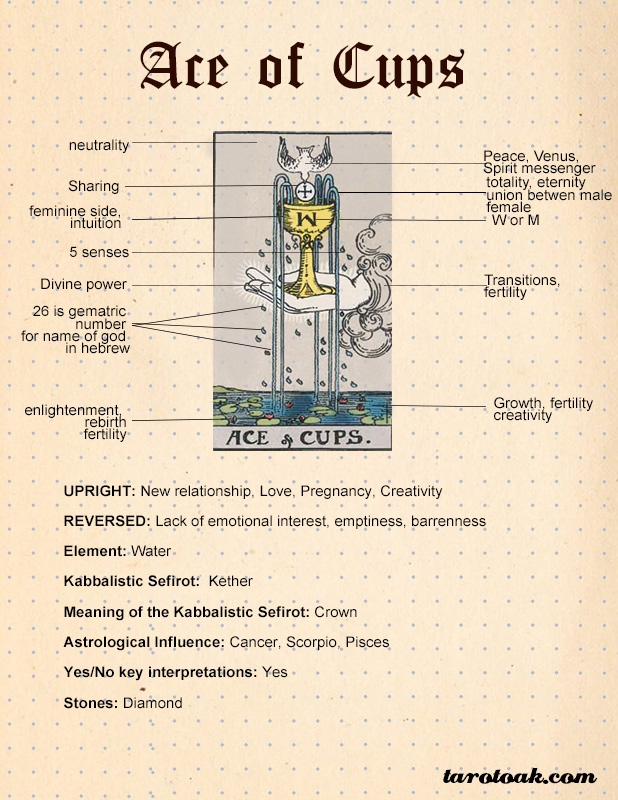

If a deck is called a "Tarot" deck then it is likely based on one of three decks: Rider-Waite (creator Arthur Edward Waite), Thoth (creator Aleister Crowley), Marseilles (creator unknown). Use whatever method or combination of methods help you to hear what the cards have to say. Do not be afraid to trust your intuition, and remember that there is no rush, no one way of learning. Part of the trick to Tarot is getting it to tell you what it wants you, in particular, to know.
#Ace of chalices how to
Like differing ideas of how to pronounce words or what words can mean. As you gain a deeper and better understanding of the cards, however, putting together those cards into words and words into sentences, you will see that the cards can express a great range of meaning, and there will be differing views on those meanings. They will allow you to discuss the cards with other students of the tarot.

These pages will give you meanings that are generally agreed on, like the sounds of the letters of the alphabet. The Fool, however, can also mean being foolish, or being carefree, or, given the image, taking the dog for a walk.


The student learns that "A" is for "Apple." But the letter "A" can be used to create many more words than "Apple." Likewise, the student learns that the Fool means "beginnings." So when they get the Fool, they might consider if anything is new or beginning. Think of such books, including this one, like reading primers. They are general and basic so that they can cover any topic from car repair to a spiritual crises to internet chat rooms. Very soon, you will not only have a very layered view of the Fool to draw on in interpreting him, but find that new insights and ideas are occurring to you, no book required.Īnother thing to keep in mind is that the book meanings are not exact meanings, nor the only meanings. You start with what strikes you and add on, bit by bit. In short, you do not have to remember or be reminded of all the possible meanings the book gives you about the Fool. And still later, you may read over the meaning again and find that the "caution" symbolized by the dog seems important. You'll add that to your "foolish" meaning. Some time later, when you're more familiar with the deck, you may re-read this book, and be struck by the "new beginnings" aspect of the Fool. So when you read about the Fool, you may be struck by the fact that he is about being foolish. The best way to use books is to take in what seems important to you, personally, about the card as you read the explanation. While very common, flipping through a book to remind you what the card is about is not a very good way to learn tarot. Also, students have a bad habit of carrying their books around with them, looking up meanings every time they lay down cards. However, there is a tendency for books to overwhelm the student with too much information.
#Ace of chalices pro
On the pro side, the student gets an overview of agreed on meanings, an idea of the history of the cards and the meaning of the symbols used. Some take classes in tarot reading, some use old fashioned memorization. Some students rely on meditation, going over a card a day, even sleeping with them under their pillows. So "Fool" is given a key word like "beginnings" and any time it turns up, that is what the reader thinks.Īnother popular method is journal writing, where the student creates their own tarot book by writing down either their personal impressions or a combination of book meanings and impressions in a journal. Key words is a popular method, where the student assigns "key" words to each card and memorizes them like flash cards. Introduction to the Court Cards The PagesĪ Brief Note to Beginners about Learning Tarot Cards Introduction to the Minor Arcana The Aces


 0 kommentar(er)
0 kommentar(er)
